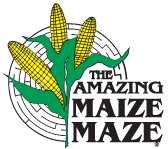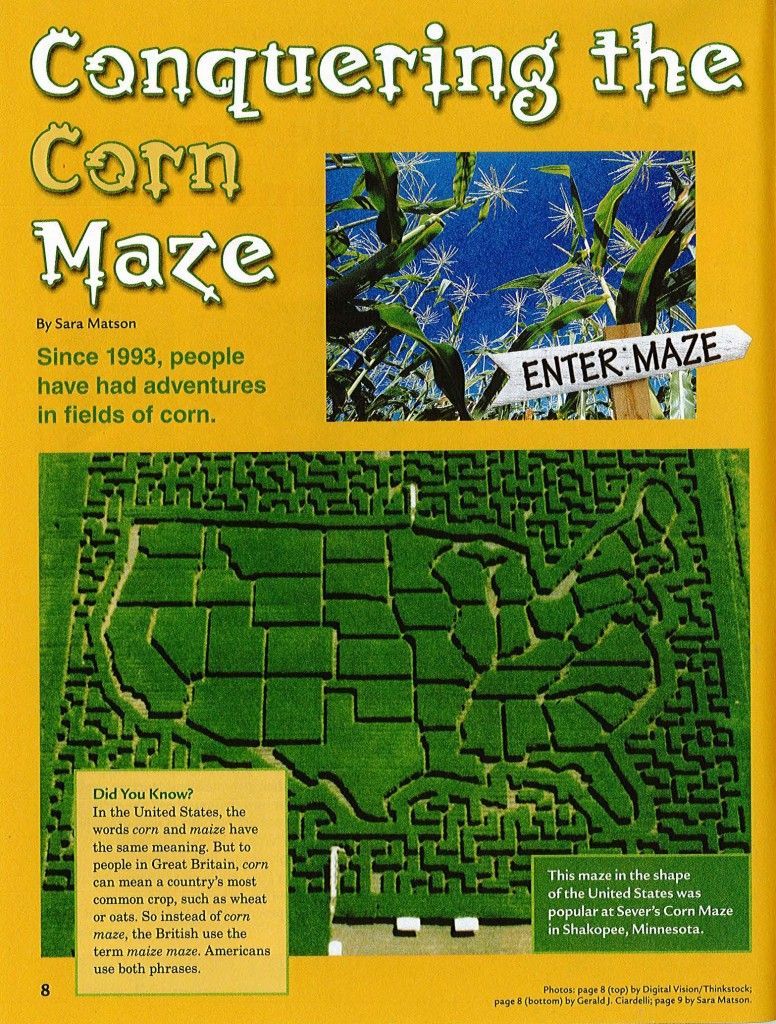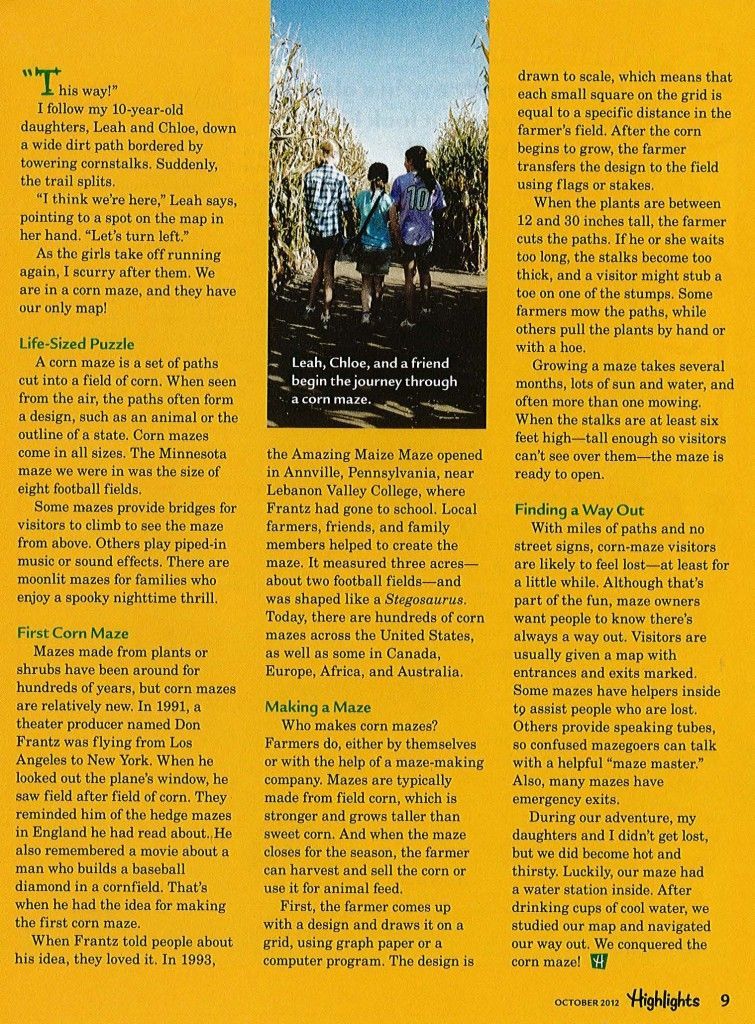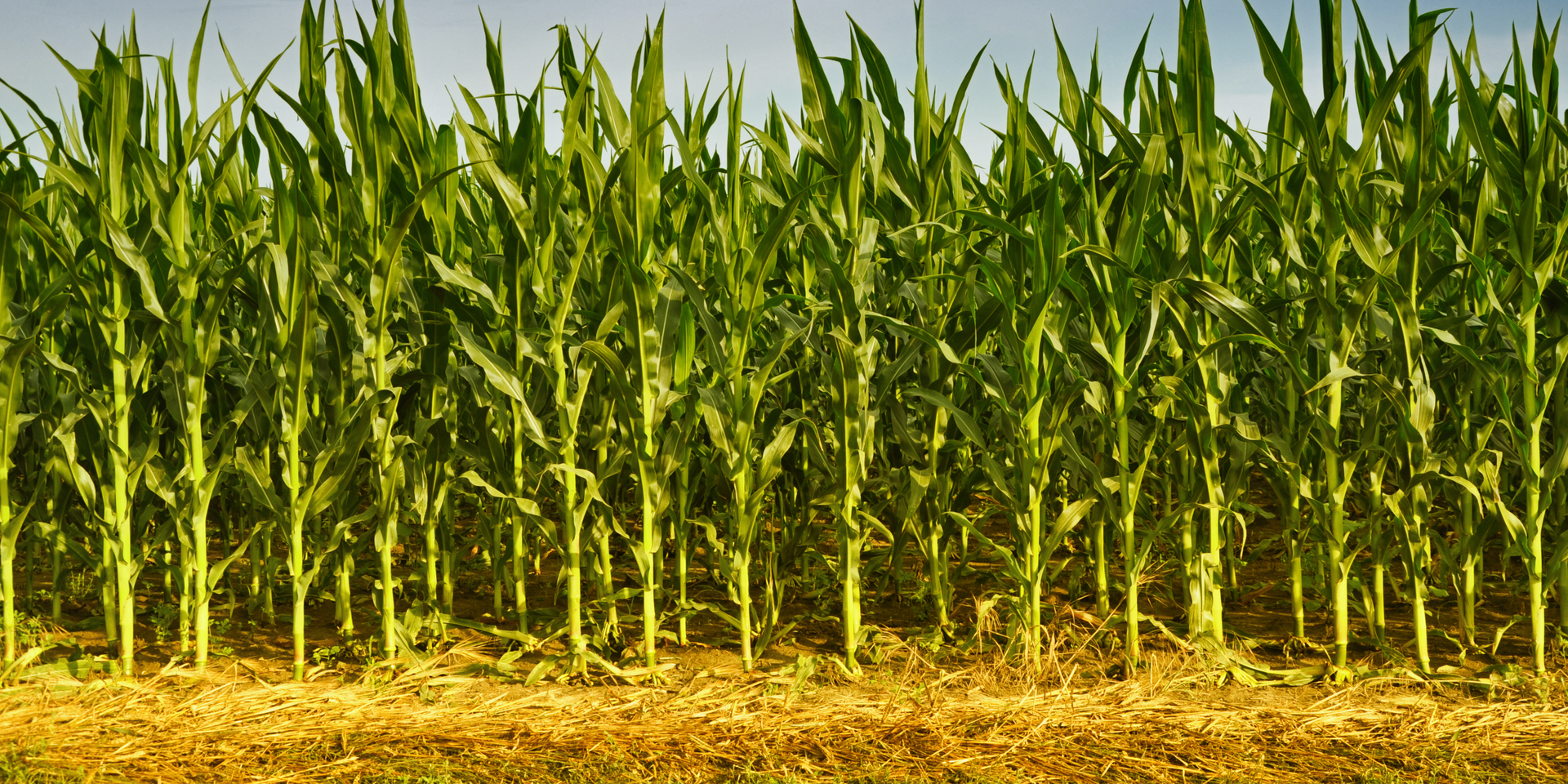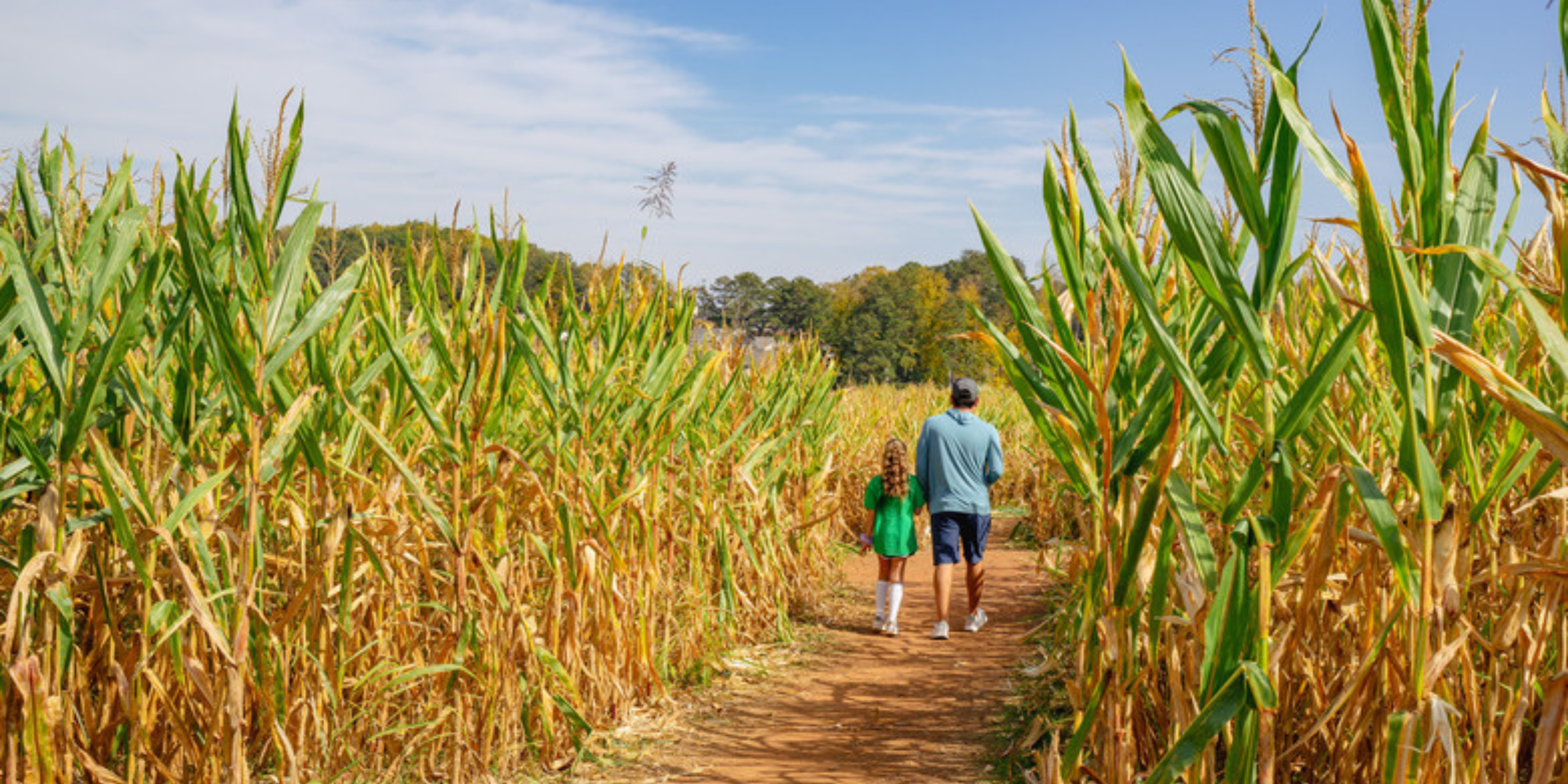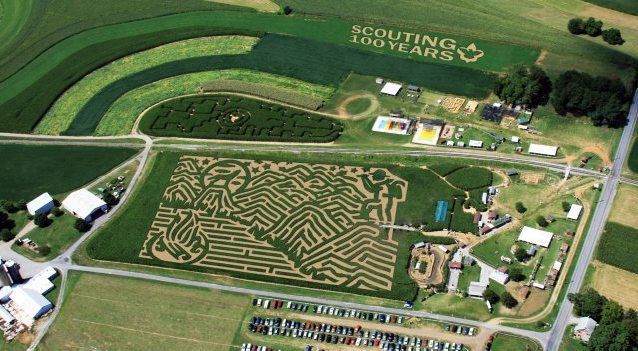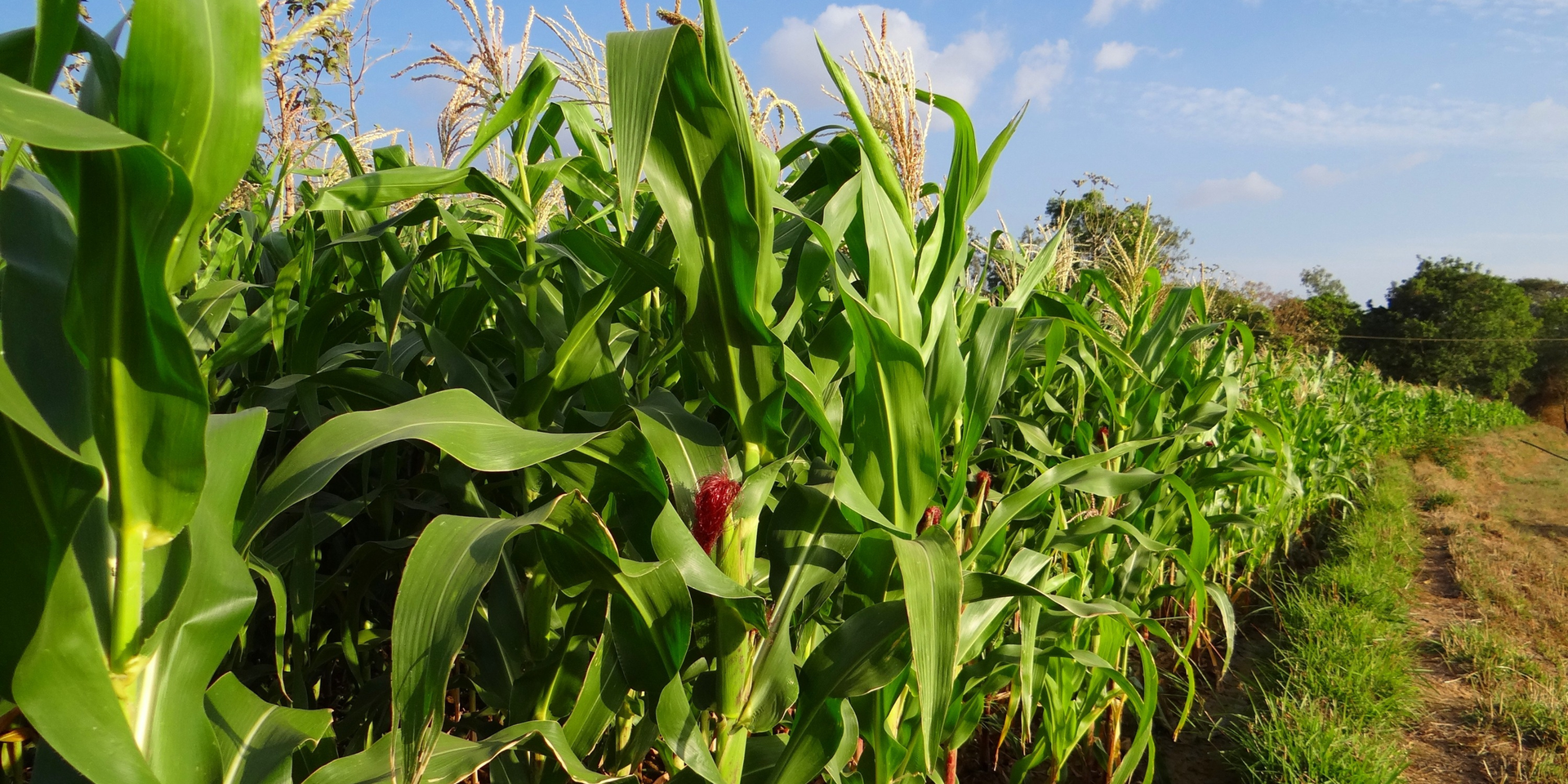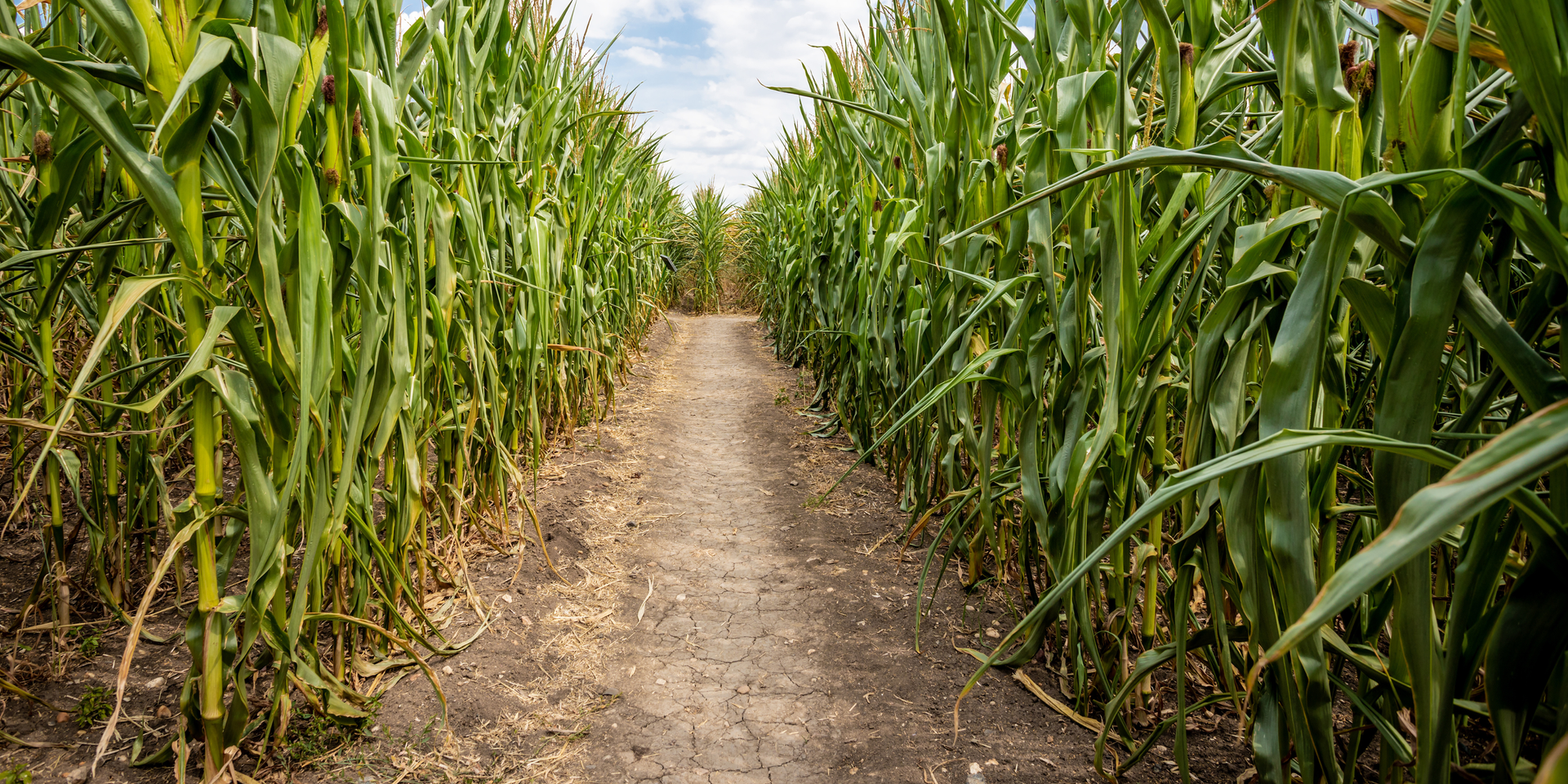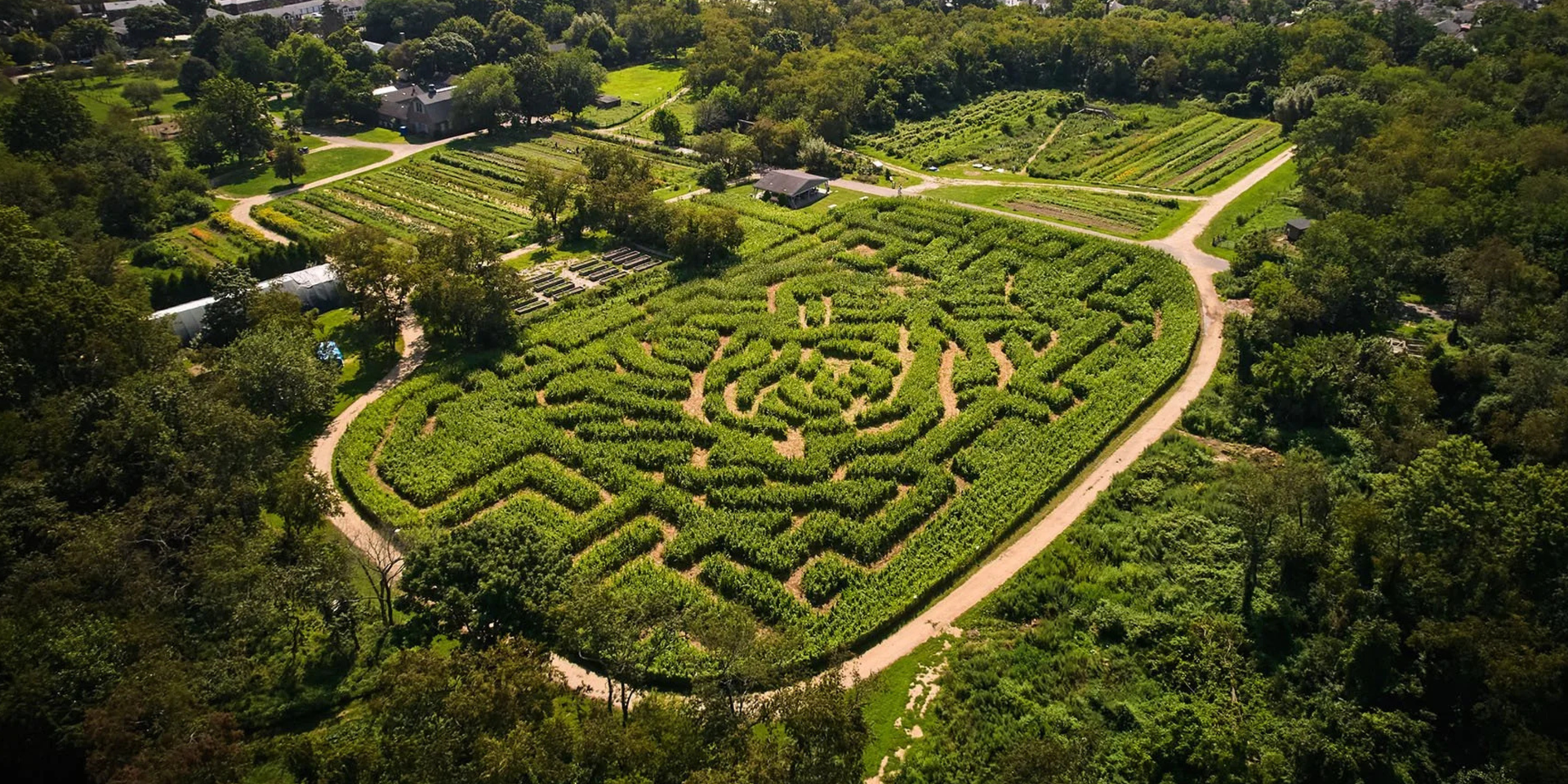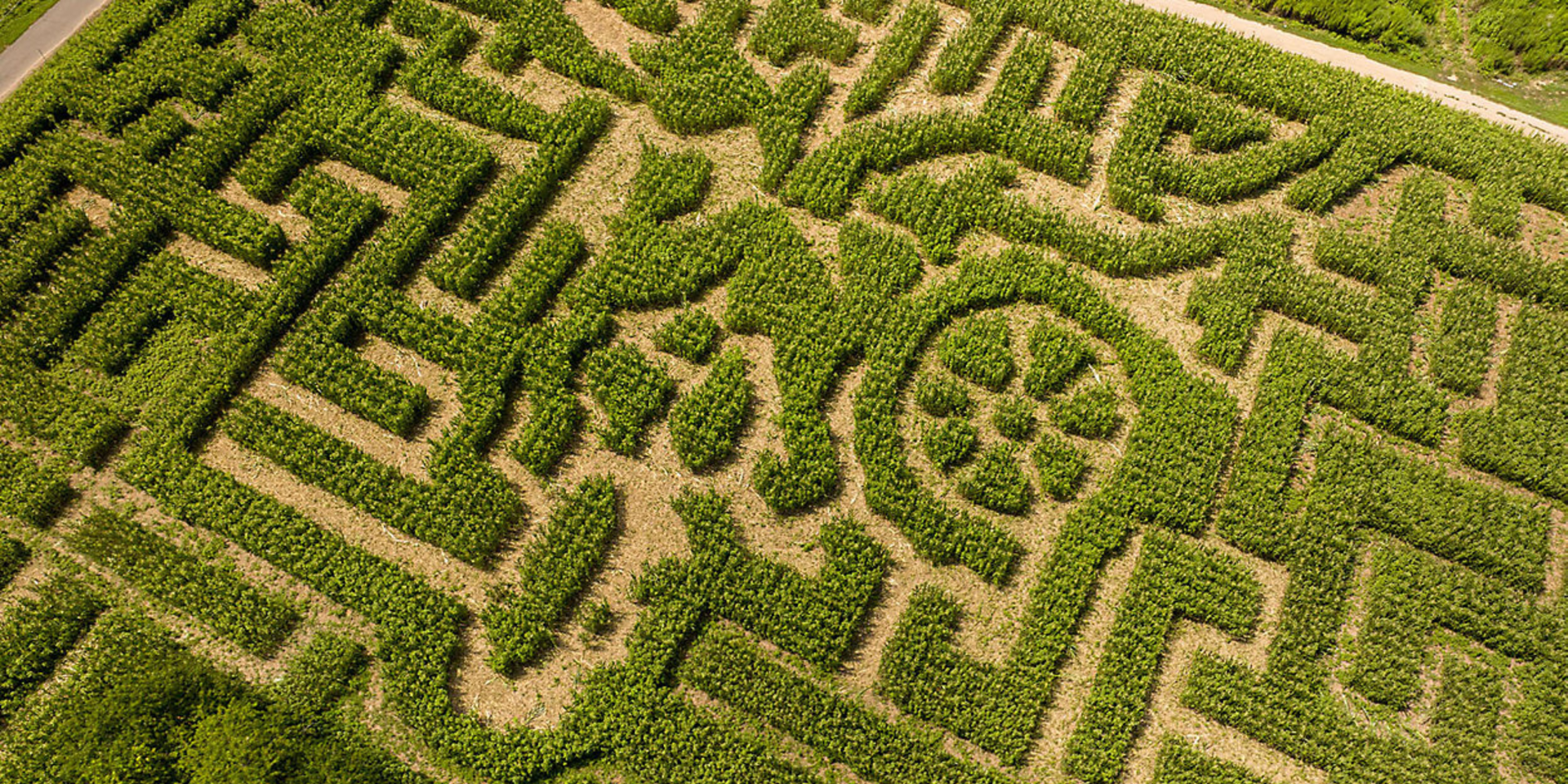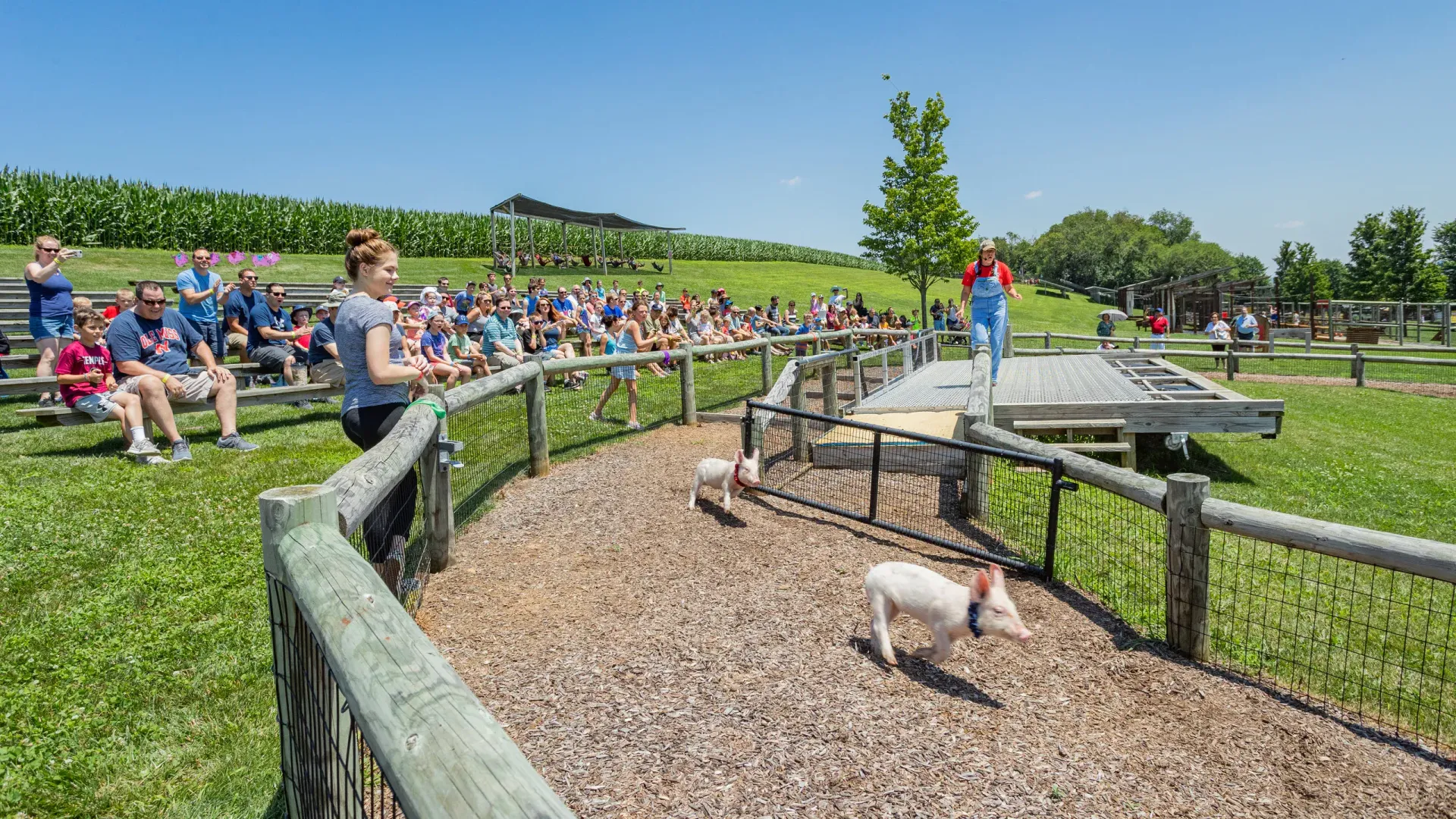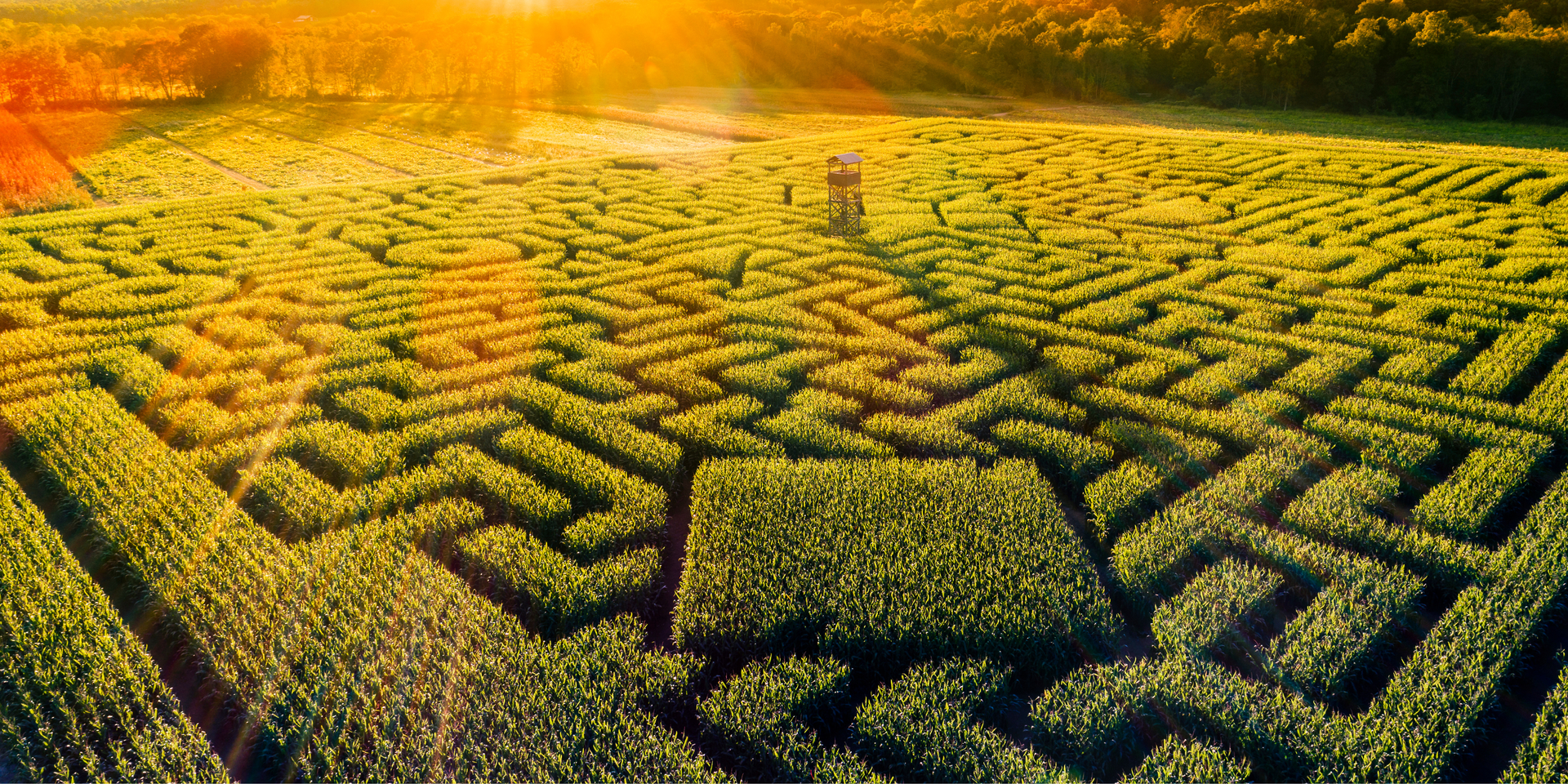I follow my 10-year-old daughters, Leah and Chloe, down a wide dirt path bordered by towering cornstalks. Suddenly, the trail splits.
"I think we're here," Leah says, pointing to a spot on the map in her hand. "Let's turn left."
As the girls take off running again, I scurry after them. We are in a corn maze, and they have our only map!
A corn maze is a set of paths cut into a field of corn. When seen from the air, the paths often form a design, such as an animal or the outline of a state. Corn mazes come in all sizes. The Minnesota maze was in the size of football fields. Some mazes provide bridges for visitors to climb to see the maze from above. Others play piped-in music or sound effects. There are moonlit mazes for families who enjoy a spooky nighttime thrill.
Mazes made from plants or shrubs have been around for hundreds of years, but corn mazes are relatively new. In 1991, a theater producer named Don Frantz was flying from Los Angeles to New York. When he looked out the plane’s window, he saw fields after field of corn. They reminded him of the hedge mazes in England he had read about. He also remembered a movie about a man who builds a baseball diamond in a cornfield. That’s when he had the idea for making the first corn maze.
When Frantz told people about his idea, they loved it. In 1993, the Amazing Maize Maze opened in Annville, Pennsylvania, near Lebanon Valley College, where Frantz and his friends created the maze. It measured three acres—about two football fields—and was shaped like a Stegosaurus. Today, there are hundreds of corn mazes across the United States, as well as some in Canada, Europe, Africa, and Australia.
Who makes corn mazes? Farmers do, either by themselves or with the help of a maze-making company. Mazes are typically made from field corn, which is stronger and grows taller than sweet corn. And when the maze closes for the season, the farmer can harvest and sell the corn or use it for animal feed.
First, the farmer comes up with a design and draws it on a grid, using graph paper or a computer program. The design is drawn to scale, which means that each small square on the grid is equal to a specific distance in the farmer’s field. After the corn begins to grow, the farmer transfers the design to the field using flags or stakes.
When the plants are between 12 and 30 inches tall, the farmer cuts the paths. If he or she waits too long, the stalks become too thick, and a visitor might stub a toe on one of the stumps. Some farmers mow the paths, while others pull the plants by hand or with a hoe.
Growing a maze takes several months, lots of sun and water, and often more than mowing. When the stalks are at least six feet high—tall enough so visitors can’t see over them—the maze is ready to open.
With miles of paths and no street signs, corn-maze visitors are likely to feel lost at least a little while. Although that’s part of the fun, maze owners want people to know there’s always a way out. Visitors are usually given a map with entrances and exits marked. Some mazes have helpers inside to assist people who are lost. Others provide speaking tubes, so confused visitors can call with a helpful "maze master." Also, many mazes have emergency exits.
During our adventure, my daughters and I didn’t get lost, but we did become hot and thirsty. Luckily, our maze had a water station inside. After drinking some cold water, we felt much better and navigated our way out. We conquered the corn maze!
